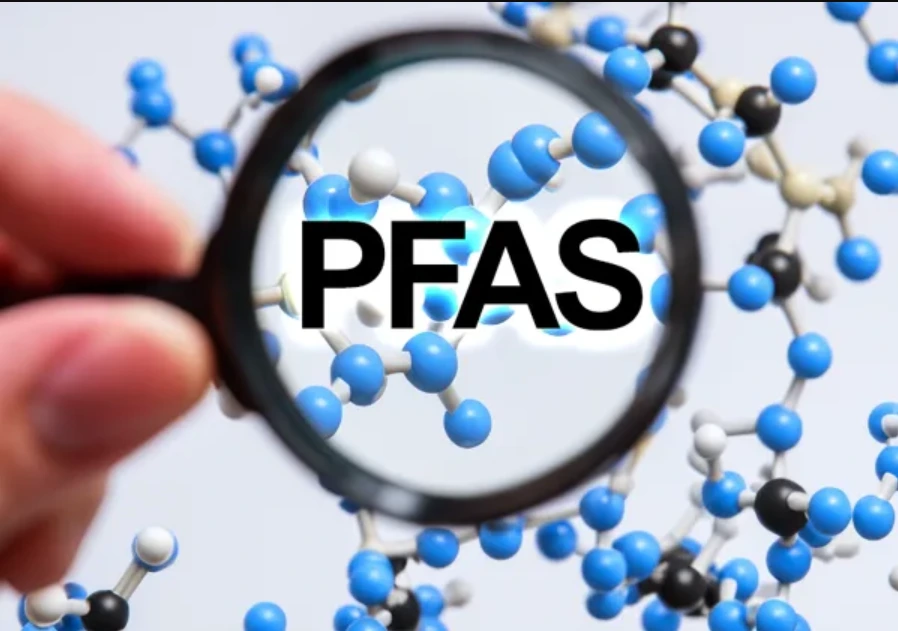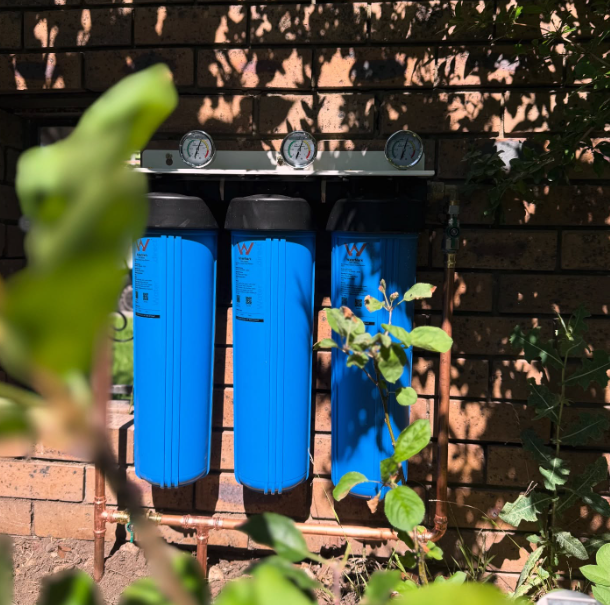INTRODUCTION:
In this post, we discuss why PFAS contamination in Australia’s drinking water is a rising concern. As well as the importance played by PFAS water filter Australia to safeguard our health. Per- and polyfluoroalkyl substances (PFAS) have been commonly used in a variety of industrial and consumer products, which has inevitably resulted in the creation of a toxic legacy in our waterways. In this article, we will detail what PFAS is, its implications for human health, and how adequate water filters like reverse osmosis can serve you in safeguarding against it. If you are in Australia and worried about your drinking water, here are some reasons why you should use a PFAS Water Filter.

Table of Contents
What is PFAS, and Why is It a Concern for Australia?
Per- and polyfluoroalkyl substances (PFAS) are man-made chemicals that have been used in industry for decades. Experts found hairspray with up to 78 chemicals linked to cancer and hormone problems is commonly used in non-stick pans, water-resistant clothes, food packaging, and firefighting foam. They are valued for their toughness and resistance to heat, water, and oil, traits that enable them to last a long time in the environment and in our bodies.
Because PFAS water filter compounds do not break down, they build up in the environment and in human tissues. In Australia, high usage and occurrence of PFAS in the environment have led to it pollute water sources. Many water supplies, particularly in rural areas, have been found to be contaminated with PFAS, which constitutes a profound threat to public health.
How Does PFAS Contaminate Water?
There are several different ways in which PFAS can enter water sources. Industrial discharge, agricultural runoff, and firefighting foam are some of the most common sources of contamination. Along with these chemicals, PFAS water filter Australia can then make their way into the groundwater and our rivers and lakes in areas where they have been used or stored.
Ranges of PFAS contamination have been found in Australia, including around military bases, airports, and industrial sites where firefighting foam containing PFAS was used. As a result, more attention is paid to the quality of water and safety in drinking water in these regions.
PFAS are particularly concerning and harmful to people because they do not break down over time, and they can be passed along and stored in the human body.
Health Risks Associated with PFAS Contamination
PFAS exposure has been associated with a range of adverse health outcomes. As the constant exposure occurs, the chemicals build up over time in what is a process called “bioaccumulation “. Even low levels of exposure to PFAS over time are harmful, as these chemicals can then accumulate in the body to dangerous concentrations, thereby putting health at risk!
Examples of health outcomes associated with exposure to individual PFAS:
Cancer: PFAS have been linked to an increased risk of certain types of cancer, particularly kidney and testicular cancer.
Hormone Disruption: PFAS exposure is capable of disrupting your endocrine system, which in turn means you may have issues producing hormones. Trouble is, this all inhibits thyroid function and reproductive health.
Immune System Suppression: Research has shown that PFAS can suppress the immune system, which means they may be at higher risk for infections and disease.
Developmental Delays: Maternal PFAS exposure is linked to developmental delays, low birth weight, and learning disabilities.
Liver Toxicity: One of the conditions caused by PFAS is liver toxicity or even liver diseases.
Given the health hazards of PFAS contamination, it becomes even more important to filter drinking water appropriately so that it filters out such harmful chemicals.
How PFAS Water Filters Help in Removing Toxic Chemicals from Drinking Water
To treat PFAS that are already present in drinking water, specialized water filtration systems are necessary because of the persistence and bioaccumulation characteristics of these chemicals. A water filter is something that we ingest without realizing this, mainly in the form of PFAS, and amongst other traits, such as a drought like we have been facing.
You will find three forms of water filtering systems that can get rid of PFAS water filter including activated carbon filters, ion exchange filters, in addition to reverse osmosis (RO) filters. Of these, reverse osmosis filters are the best at removing PFAS from water since they can remove several types of contaminants, such as heavy metals and bacteria, while many other harmful substances.
Reverse Osmosis (RO) Filters: How They Work and Why They Are Effective Against PFAS

Reverse Osmosis:
A water filtration process that uses a semi-permeable membrane to remove contaminants from drinking water. During this process, water is passed through the membrane under pressure, which will only allow H2O molecules to pass and retain larger molecules such as PFAS, bacteria, and other undesirable entities.
How Reverse Osmosis Works
Pre-Filtration:
The water travels through a pre-filter that reduces larger particles, including sediment and chlorine, before reaching the rest of your system.
Semi-Permeable Membrane:
The water goes through a semi-permeable membrane, which removes contaminants like PFAS, sugar metals, and other pollutants. This membrane has small pores, which can keep harmful molecules out but allow water with no impurity to go through it.
Post-Filtration:
After the water passes through the membrane, it undergoes a post-filtration process to remove any remaining impurities and ensure that the water is pure and safe to drink.
Reverse osmosis is largely effective at removing PFAS due to the filter being able to capture the smallest of contaminants, meaning you can drink water free from any and all chemicals after using this system.
Other Types of PFAS Water Filters
Although reverse osmosis is considered to be the most effective technology for removing PFAS, other water filtration technologies can be applied to decrease PFAS water filter concentrations in drinking water as well. These include:
Activated Carbon Filters:
Activated carbon filters function by adsorbing contaminants on the carbon surface. These are not as good at taking out all PFAS as reverse osmosis, but they can get rid of some.
Ion Exchange Filters:
These filters partially soften the water by exchanging harmful ions in the water with non-harmful ones. While certain models appear to reduce PFAS, their effectiveness depends on the type and amount of PFAS in the water.
Each of these filters has its pros and cons, and the best choice for you is going to depend on exactly what is in your water that needs to be removed, as well as how clean you need or want it.
Why Choose a PFAS Water Filter in Australia?
Several areas in Australia have been affected by PFAS contamination, which has contaminated drinking water in many regions. Whether you live next to industrial bases in rural areas or near sources of PFAS contamination such as an urban water supply, using a PFAS water filter is one of the most important steps you can take to protect your health and ensure that drinking water is free from harmful chemicals.
Some reasons that using a PFAS water filter in Australia would be advisable:
Protect your Health: A PFAS water filter helps lower the chance of long-term health risks from harmful chemicals
Fresher Taste and Smell: Drinking water can taste better if you remove PFAS from it, and the water filters can also help reduce the musty smell of your drinking water.
Peace of Mind: Families with young children, pregnant women, and individuals who have been immunocompromised can feel peace knowing their drinking water isn’t laced with dangerous PFAS and other contaminants.
Environmental Impact: By removing PFAS from your drinking water, you contribute to reducing the environmental impact of these harmful chemicals.
How to Choose the Right PFAS Water Filter in Australia
Selecting the right PFAS water filter for your residence can be an overwhelming experience, as there are so many options on the market. Anyway, like I said, there are a few things to think about when making that decision to choose the right PFAS water filter:
Filtration Technology: As mentioned earlier, reverse osmosis is the most effective method for removing PFAS from water. Look for a filter that uses this technology for the best results.
Capacity: How big your family is, and how much water you use per day. Option for a filter that works the best but does not require regular cleaning.
Certification: Check for certifications that the filter is sufficient to purify Australian water quality standards. Seek out certifications from reliable bodies to be sure a filter functions for PFAS and other pollutants.
Maintenance Requirements: Consider the long-term maintenance of the filter, including the frequency and cost of filter replacements. Choose a filter that is easy to maintain and replace.
Benefits of Using a PFAS Water Filter in Australia
Effective PFAS Removal: As mentioned earlier, reverse osmosis filters are among the best options for removing PFAS from water. Other filters, like activated carbon, can also capture PFAS, but RO systems offer the highest level of purification.
Cost-Effective: Buying and installing a water filter may appear to be costly in advance; however, this is not a minute contrast with the well-being of your family. In the long run, the price of buying new bottled water or even those high medical bills for PFAS exposure could be much lower than your first PFAS water filter investment.
Less Maintenance: PFAS water filters, like reverse osmosis, need less maintenance. As long as the filters are changed regularly, the system functionality is usually sufficient.
Convenience: Enjoy clean, filtered water right from the tap. Minimize trips to buy bottled water. Eliminate the need for periodic water delivery services.
The Role of Government Regulations in Tackling PFAS Contamination
The Australian government has a critical role in the management and remediation of PFAS contamination, particularly at Commonwealth land defense sites and in relation to public drinking water supplies. Over the years, several programs and legislations have been developed to investigate and control the release of PFAS into the environment with a special focus on water supplies.

National Environment Management Plan (NEMP) for PFAS: The Australian Government has prepared a NEMP that provides guidance on how to assess and manage PFAS-contaminated sites. The strategies address controlling contamination of PFAS in water, soil, and food resources to safeguard public health.
Environmental Protection Authorities (EPAs): Although EPAs oversee and regulate levels of PFAS in drinking water, local authorities need to manage these contamination risks.
Despite these interventions, PFAS contamination continues to lurk throughout several parts of Australia. Therefore, PFAS water filters are imperative for concerned individuals and families across the country.
Conclusion:
PFAS has long-lasting health effects, and the contamination of its water is a serious issue for Australians. A reverse osmosis system with a PFAS water filter will filter those toxic chemicals out. By using a PFAS water filter like this, especially a Reverse Osmosis one, you can ensure clean drinking water from these poisons. PFAS water filters offer an excellent and long-term solution for your safety and keeping your family healthy. Not only that, you will be able to taste the water more cleanly without fear of harmful chemicals.
If you live in Australia and are concerned about PFAS contamination, it’s time to take action and install a PFAS water filter in your home. Please don’t wait until it’s too late, protect your health and the health of your family today!
_edited_9.png)